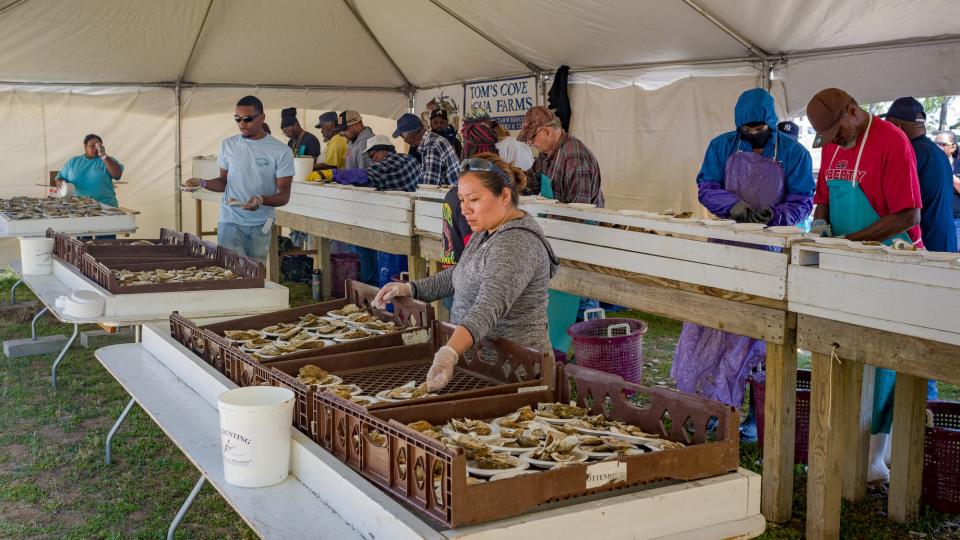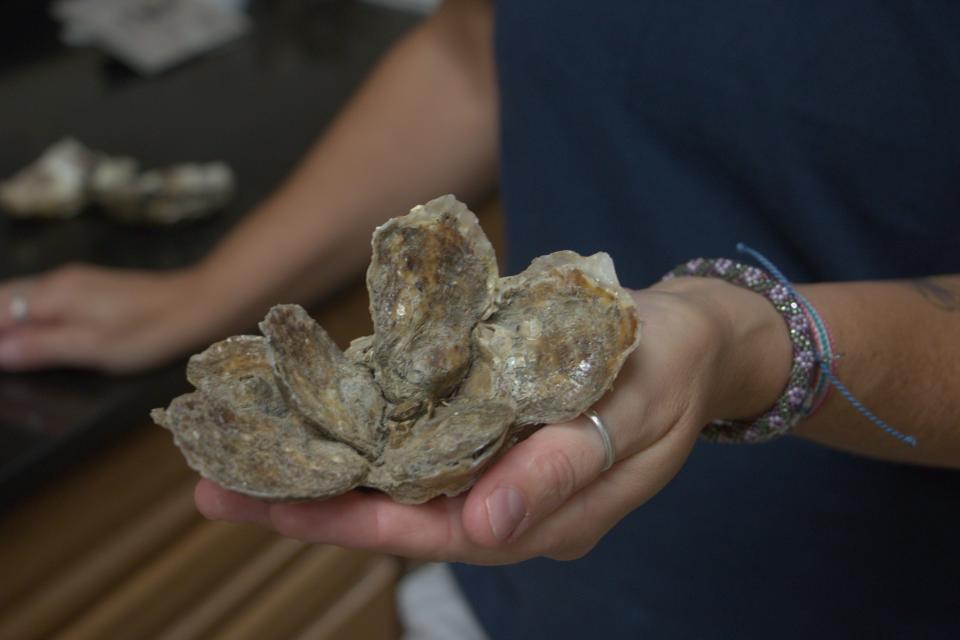Oyster harvest rebounds in Bay and its waters, and here's what's driving recovery
In a sign the overall health of the Chesapeake Bay is improving, oyster harvests have been nothing short of plentiful, with a strong likelihood too of a successful next season.
The most recent commercial oyster season was open from Nov. 1, 2022, through March 31, 2023, for dredging boats and Oct. 1, 2022, through March 31, 2023, for non-dredging boats.
"It's been a great season for us, and we produced in the area of 632,000 bushels of oysters this past season," said Robert T. Brown, president of the Maryland Watermen's Association. "That's the highest it's been in over 30 years. It's got to do with the natural conditions with salinity being up and the water in lower Bay is better. We've also had two of the best oyster recruitment years in a number of years."
Brown added that a number of smaller oysters were also found that were not harvested to ensure a plentiful supply for next season. The Maryland Department of Natural Resources noted the daily catch limit for commercial fisherman was up to 12 bushels per licensee per day, not to exceed 24 bushels per boat per day in non-dredging boats.

A harvest up to 100 bushels per licensee per day, not to exceed 100 bushels per boat per day, was set for boats that only used dredging.
"We put in a new oyster master plan a few years ago that helps with the prices. We've requested from the department to stay with the same plan since everything is getting better every year. We've done this while working with less bottom area than we did in the past due to more sanctuary space," Brown said.
According to Brown, conservation efforts have been vital to seeing harvest statistics improve. He recalled the days of no limits on the fishery, with some boats operating nearly 24 hours straight. While more attention has been given to sanctuary spaces for the bivalve, the industry is approaching long-term resiliency.
"They call us watermen, but we're really businessmen. To do that, we have to reinvest in our business and we're doing that by being conservative in our practices and not gutting market, and getting good prices for our products," Brown said.
More on crab prices this season Chesapeake Bay blue crab numbers show slight rebound. How will it impact prices
How is Maryland investing in oysters?

For its part, the state has also invested in the future of the oyster market by harvesting federal monies.
Earlier this month, Maryland Senators Ben Cardin and Chris Van Hollen joined oyster experts from the University of Maryland Center for Environmental Science and other environmental partners to celebrate a nearly $1 million federal award for oyster restoration and resiliency research and for a roundtable discussion on the future of oyster research for restoration of the Chesapeake Bay.
According to the official announcement, "the funding is part of Senators’ ongoing effort to help restore Maryland’s oyster population and protect the Chesapeake Bay, and the project will bring together teams of researchers across labs to study the oyster's ability to protect shorelines and improve the habitat of the Bay bottom while recovering overall oyster populations, enhancing both the ecological and economic well-being of the Bay and its citizens."
The University of Maryland Center for Environmental Science is a research institution with a legislatively mandated mission to provide and assist the state in understanding, conserving and restoring Maryland’s environment, particularly the Chesapeake Bay.

“I am so proud that we are gathered here today to celebrate a new research funding initiative on the resilience of oysters. UMCES’ oyster hatchery is the largest on the East Coast and serves a critical role in supplying oyster for restoration, aquaculture, and the public fishery," said Peter Goodwin, University of Maryland Center for Environmental Science.
The teams conducting research and data-collecting are comprised of over a dozen scientists and graduate students.
“Oysters are a central part of Maryland’s environment and economy — not only do they naturally filter our waters and strengthen the Bay’s diverse ecosystems, but they also help spur our local Bay economy. It’s important that we protect them and ensure they have a strong future in Maryland,” Sen. Van Hollen said.
Environmentalists laud oyster conservation efforts
Organizations like ShoreRivers are more than just calling for conservation efforts, they are taking part.
In June, 18 million oysters were planted on a sanctuary near Tilghman Point in Eastern Bay this as part of Operation Build-a-Reef: Eastern Bay.
The planting was the culmination of a two-year fundraising effort by ShoreRivers, in partnership with Oyster Recovery Partnership and other key supporters. An initial planting of 70 million oysters was completed by the partnership in 2022, with funding provided by the Maryland Department of Natural Resources.
More on additional federal dollars Assateague, Chincoteague parks get big boosts with federal funds. Here's what's in works.
More on invasive species in the Bay Is invasive blue catfish depleting Maryland blue crab? Gov. Moore wants feds to help
“The waterways of Eastern Bay, including the Miles and Wye rivers, suffer from excess nitrogen and sediment pollution. Thanks to generous support from many individuals, businesses, and foundations, we’re proud that we’re able to support direct oyster restoration work here on the Shore," said Ben Ford, a Miles-Wye Riverkeeper.
The Oyster Recovery Partnership, a nonprofit dedicated to Chesapeake Bay oyster restoration, has planted more than 10 billion oysters and recycled more than 280,000 bushels of oyster shell since its founding in 1994.
This article originally appeared on Salisbury Daily Times: Oyster harvest rebounds in Maryland, and here's what's driving it

